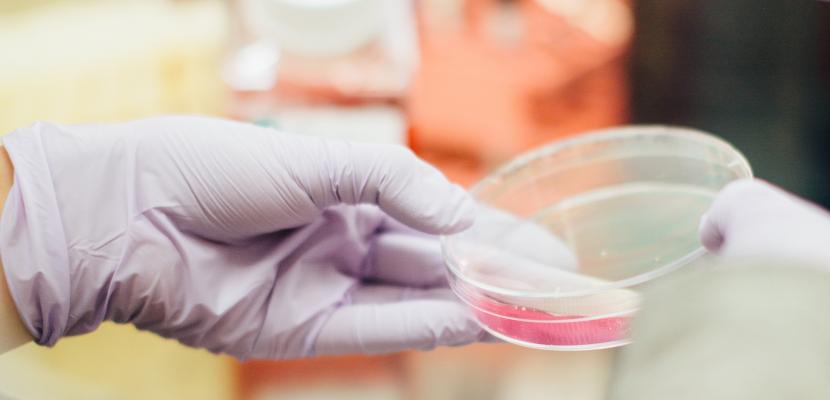Image

Demonstrative project to analyse the feasibility of ISCO technique in dissolved POPs
Published on 05 January 2021

Spain
Aragón
This is the good practice's implementation level. It can be national, regional or local.
About this good practice
A factory produced lindane in Aragon from 1975 to 1989. An estimate of more than 150,000 tons of solid waste with high content of HCH and other organochlorine compounds was produced, and dumped, together with liquid wastes in two landfills, Sardas and Bailin. Since 1994, the Government of Aragon implements measures for the control, containment and remediation of the contamination.
The Government of Aragon was coordinator of the LIFE DISCOVERED project, an in situ chemical oxidation (ISCO) pilot test that aimed to test the field feasibility of the ISCO technique for remediating pollution caused by a mixture of persistent organic pollutants (POPs) and other dense, volatile and semivolatile compounds in groundwater.
The pilot test was developed in Bailin landfill, in an area equipped with boreholes for the injection of reagents and the pumping and recirculation of groundwater. Alcaline activation was applied to increase reactivity of the oxidant.
Objectives:
1.To analyse if the persulfate was capable to destroy contaminants in the test area
2.To collect the necessary information for designing a full scale application
The project confirmed that ISCO was successful to reduce dissolved pollutants, eliminating the 99% of the HCH and 95-99% of the rest of residues (benzene, chlorobenzene, others)
Stakeholders of the project are the municipalities of the river Gallego basin that are positively influenced by all remediation actions, as well as universities and research centres.
The Government of Aragon was coordinator of the LIFE DISCOVERED project, an in situ chemical oxidation (ISCO) pilot test that aimed to test the field feasibility of the ISCO technique for remediating pollution caused by a mixture of persistent organic pollutants (POPs) and other dense, volatile and semivolatile compounds in groundwater.
The pilot test was developed in Bailin landfill, in an area equipped with boreholes for the injection of reagents and the pumping and recirculation of groundwater. Alcaline activation was applied to increase reactivity of the oxidant.
Objectives:
1.To analyse if the persulfate was capable to destroy contaminants in the test area
2.To collect the necessary information for designing a full scale application
The project confirmed that ISCO was successful to reduce dissolved pollutants, eliminating the 99% of the HCH and 95-99% of the rest of residues (benzene, chlorobenzene, others)
Stakeholders of the project are the municipalities of the river Gallego basin that are positively influenced by all remediation actions, as well as universities and research centres.
Expert opinion
This good practice from Aragon demonstrates a successful technique that has been used for the remediation of sites that have been contaminated with Lindane waste. The pilot project has shown promising results in terms of eliminating lindane and other pollutants from the groundwater which is an important achievement for the municipalities in the surroundings of the landfills in which the lindane production waste has been dumped. The remediation method can be used by other sites where this type of waste has been stored and thus contribute to the health and wellbeing of the citizens and the improvement of the environment.
Works at
Interreg Europe Policy Learning Platform
Resources needed
-Construction works
-Facilities and equipment for injection–pumping
-Chemicals (activant, oxidant)
-Office rental
-Equipment and reagents for laboratory analysis
-Human resources: field staff, laboratory technicians, technical staff
Estimate budget for a pilot test: 1.2 M €
-Facilities and equipment for injection–pumping
-Chemicals (activant, oxidant)
-Office rental
-Equipment and reagents for laboratory analysis
-Human resources: field staff, laboratory technicians, technical staff
Estimate budget for a pilot test: 1.2 M €
Evidence of success
Mass balance analysis showed that the ISCO technique removed 5.5 kg to 6.3 kg of dissolved contaminants in 1 month, which is the amount of contaminants circulating in the same area during 2-5 years.
Additionally, the technique was successvully applied full scale in the site.
Additionally, the technique was successvully applied full scale in the site.
Potential for learning or transfer
The ISCO technology for the remediation of dissolved lindane production waste compounds could be applicable to any contaminated site where lindane was produced or stored.
There are 25 lindane contaminated megasites in 14 European countries, according to the PETI committee "Lindane in EU" and more than 40 megasites based in recent information coming from the EU project HCHinEU. All the regions and countries where these sites are located could benefit from this Good Practice.
There are 25 lindane contaminated megasites in 14 European countries, according to the PETI committee "Lindane in EU" and more than 40 megasites based in recent information coming from the EU project HCHinEU. All the regions and countries where these sites are located could benefit from this Good Practice.
Further information
Website
Good practice owner
You can contact the good practice owner below for more detailed information.
Organisation
Government of Aragón

Spain
Aragón
Contact
Head of Service of Contaminated Soils
